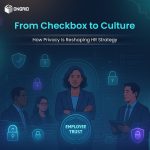Table of Contents
ToggleAs organizations amplify their hiring efforts amidst the great attrition, validating a candidate’s claim about their alma mater is a very crucial aspect of background verification.
Education verification validates an employee’s claim about their academic history. Through this verification, attributes such as university/institute name, registration number, year of completion, education level, course name, course length, the field of study, grade, etc. are verified. Most organizations conduct education verification for their white-collar employees. The most common process is to verify the highest education credentials. However, some organizations choose to verify the top two or all education credentials of their new employees Such a choice depends on the profile, industry standards, and specific compliance or regulatory requirements.
Why education verification?
According to a recent industry research, it was identified that education verification-related discrepancies are the second highest cause for background verification failures. Of all the failure cases, education verification failure range between 7% in the IT industry to 19% in real estate.
Education verification is necessary to validate a candidate’s certifications, academic history, and training. Thus ensuring the provided details are not exaggerated to fit the requirements. HR managers are also plagued with counterfeit degrees and academic certificates. Background verification companies like OnGrid put together the tech-enabled processes and methodologies to identify such degrees and certificates.
How is education verification executed?
Education verification can be validated by respective HR or Talent Acquisition teams who can reach out to the registrar or academic section of the institute, university or the board to confirm details claimed by the candidate. Most educational institutes have their defined processes to have the credentials of ex-students verified. Some have also adopted online portals. However, most academic institutions still follow an offline process. Some institutes charge a nominal fee for the verification. Some institutes even require sending a demand draft and a letter to conduct the verification.
For HR or Talent Acquisition teams, understanding different processes across thousands of education institutes can be a daunting task. This is where third-party background verification platforms such as OnGrid come in handy, who already maintain a database of processes of each institute, university or education board, and can initiate and execute the verification in a seamless manner.
OnGrid’s digital trust platform is equipped to collect necessary documents and consent from the employees directly and complete 90% of verification requests within a week.
Generally, as part of the process, the following data points (fields) are verified:
- University / Institute name
- Registration / Roll number
- Year of completion
- Education level (Diploma, Bachelors, Masters, etc.)
- Course name
- Course length
- Field of study
- Grade / Percentage
To know more, book a free demo now!
OnGrid is an ISO-compliant digital trust platform that has conducted over 25 million verifications for 1000+ organizations. OnGrid’s digitally-enabled processes complement the users with the shortest verification time at the most cost-effective rates.
To know more about education verification and other 40+ checks offered by OnGrid write partner@ongrid.in or book a free consultation now.
FAQs
1. What is education verification and why is it important?
Education verification is the process of confirming a candidate’s academic qualifications and credentials. It helps employers ensure that the information provided about degrees or certifications is accurate and not forged or exaggerated.
2. What details are typically verified during education verification?
Details such as the university/institute name, registration number, year of completion, education level, course name and duration, field of study, and grades/percentages are commonly verified.
3. Who usually conducts education verification—employers or third-party agencies?
While HR or Talent Acquisition teams may attempt this directly, many companies prefer third-party platforms like OnGrid due to their experience, process familiarity, and existing relationships with academic institutions.
4. Are all educational institutions open to verification requests?
Yes, most are. However, the verification processes vary widely—some institutions accept email or online forms, while others require offline communication, demand drafts, and formal letters.
5. How long does education verification usually take?
With OnGrid, 90% of verification requests are completed within a week. Timelines can vary depending on the institution’s response time and whether the process is online or offline.





Leave a Reply